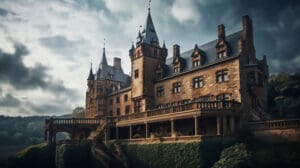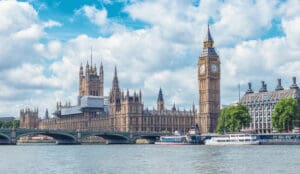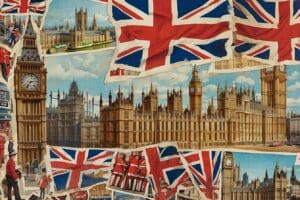How The Great Italian Flag was Born
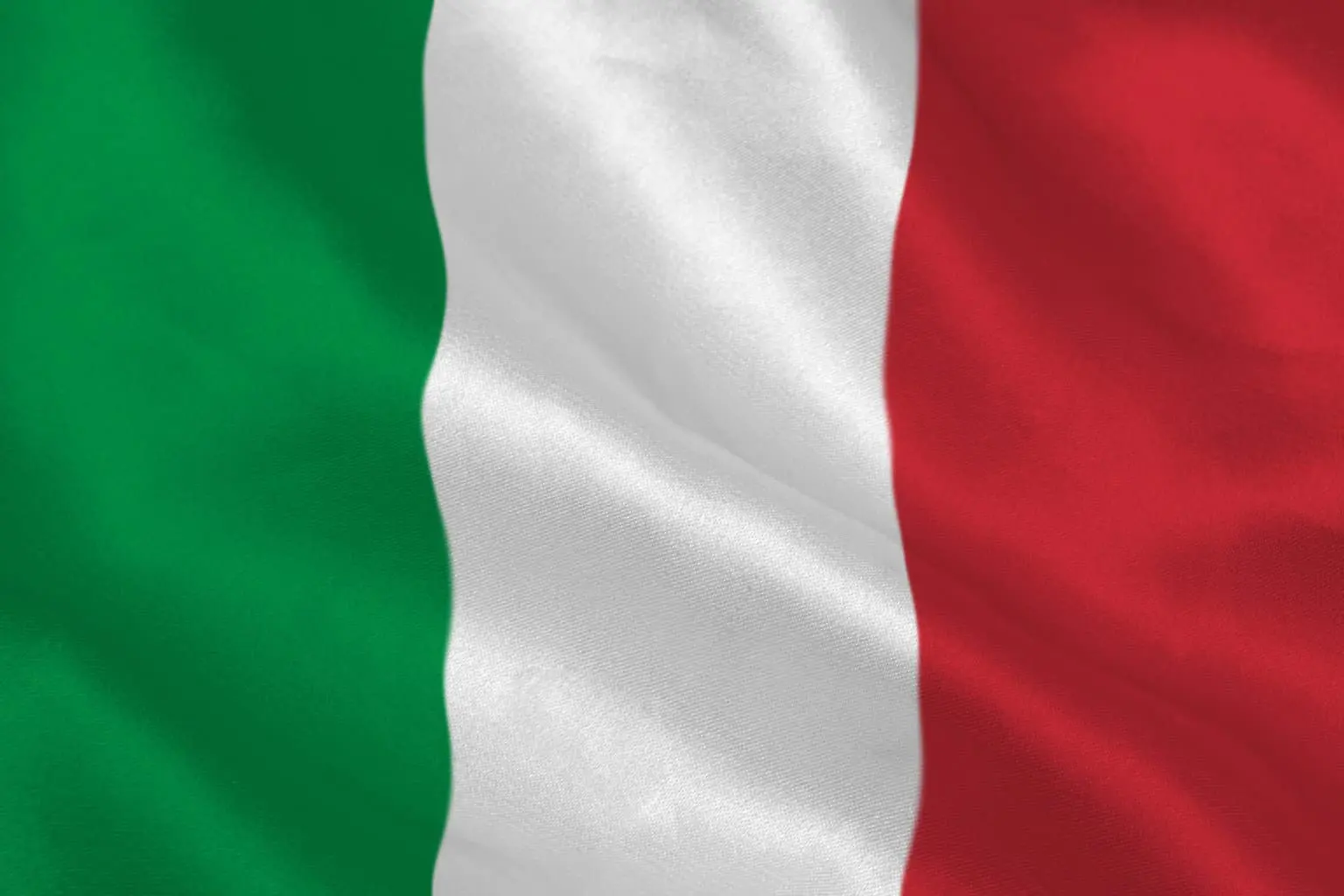
Updated On: April 21, 2024 by Esraa Mahmoud
The Italian flag has always been one of the most beautiful flags in the world, with its three distinguished colours. To no one’s surprise, just like everything Italian, the Italian flag also has quite an exciting history that surely deserves a look at.
The Italian flag originated as a military flag and was proposed in 1796 to distinguish the Italian contingent within Napoleon’s army in the Cispadane and Cisalpine Republics.
In the 19th century, when the Italian territory was divided into various states, the Italian flag established itself as a symbol of freedom and national identity. Today, it is considered one of the most important symbols of the Republic.
But what are the flag’s three colours – green, white, and red? And when and why was it chosen to represent Italy? Let’s break down the story of how the Italian flag was born!
History of the Italian Flag
The history of the Italian flag began at the end of the 18th century. The Italian flag, in fact, draws inspiration from that of France, introduced in 1789 during the Revolution. The three French colours – blue, white, and red – were chosen because the Parisian militia, a sort of popular army founded by the revolutionaries, wore a blue and red cockade (the historical colours of Paris), to which white, the colour of the Royal House of Bourbon, was added.
In 1790, the National Assembly officially adopted the blue, white and red flag as the state emblem. Representing the French Revolution, the French Tricolour became a symbol of freedom. Also some republics adopted flags inspired by it. Among others, Romania, Mexico, Belgium and some states were founded on Italian territory.
The Birth of the Italian Flag and the Meaning of its Colours
In 1796 Napoleon Bonaparte invaded northern Italy and was welcomed as a liberator by some of the inhabitants. The Italians formed militias to fight alongside Napoleon’s troops and equipped themselves with cockades and banners inspired by the French flag as a symbol of recognition.
In particular, the Lombard Legion used a white, red, and green cockade, which were chosen because white and red, as well as being present in the French cockades, characterised the coat of arms of the city of Milan, while green had been the colour of the Milanese Civic Guard’s uniform since 1782.
Although the three colours had no specific meaning, they were soon given a symbolic value: green represented hope, white represented faith, and red represented love.
The Italian flag was officially adopted on 7 January 1797 by the Cispadane Republic, a state created at the end of 1796 on the part of the territory of present-day Emilia-Romagna and Tuscany.
The flag of the Cispadane Republic was quite different from the current one because the stripes were arranged horizontally, and a coat of arms was placed in the centre. Since then, however, green, white, and red have become the national colours of Italy.
The three colours of the Italian flag, in various forms and with various coats of arms, were used by the Republics created between 1796 and 1799 on Italian territory and, later, by the ‘Napoleonic’ Kingdom of Italy, which existed from 1805-1814 and extended over a large part of the Po Valley.
The Tricolour of the Italian Flag Between Restoration and Risorgimento
In 1815, the period of the Restoration began, and many of the former rulers, ousted by Napoleon, were able to regain their thrones and the Italian territory, as well as being divided into various States, Italy was under the rule, partly direct and partly indirect, of the Empire of Austria.
The use of the Italian flag was severely repressed by the political authorities throughout Italy.
However, between 1815 and 1861, the Italian flag took on a specific ideological value: the patriots of the Risorgimento, who aspired, if not to national unity, at least to independence from the Austrians, considered it the most significant symbol of freedom.
The Italian Flag in United Italy
In 1848, a new revolutionary wave swept through Europe and the Italian flag was used during all the uprisings that took place on Italian territory. Furthermore, Charles Albert of Savoy, King of Sardinia (i.e., of a state roughly composed of Piedmont, Liguria, Valle d’Aosta, and Sardinia) and supporter, to a certain extent, of the revolutions, adopted the Italian flag with vertical stripes as the official flag of his state.
In the flag’s centre was the arms’ coat of the House of Savoy, a red shield with a white cross. When the Kingdom of Italy was proclaimed in 1861, this flag was officially adopted and remained the country’s emblem until the proclamation of the Republic in 1946.
During the Fascist regime (1922-1943), Mussolini proposed to add the fascio littorio, the symbol of fascism, to the flag. Still, the proposal was rejected by King Victor Emmanuel III (it was only decided to make the end of the pole in the shape of a fascia).
On 2 June 1946, a referendum decreed the monarchy’s abolition and the Republic’s establishment. A little more than two weeks later, on 19 June, a government decree decided to remove the Savoy coat of arms from the Italian flag.
The white stripe remained ’empty’, and the flag assumed its current appearance. The decision was confirmed by the Constituent Assembly in 1947.
Over the years, the Italian flag has been used by countless political groups, associations, militias, etc., usually with the addition of specific symbols and coats of arms.
The Characteristics of the Italian Flag
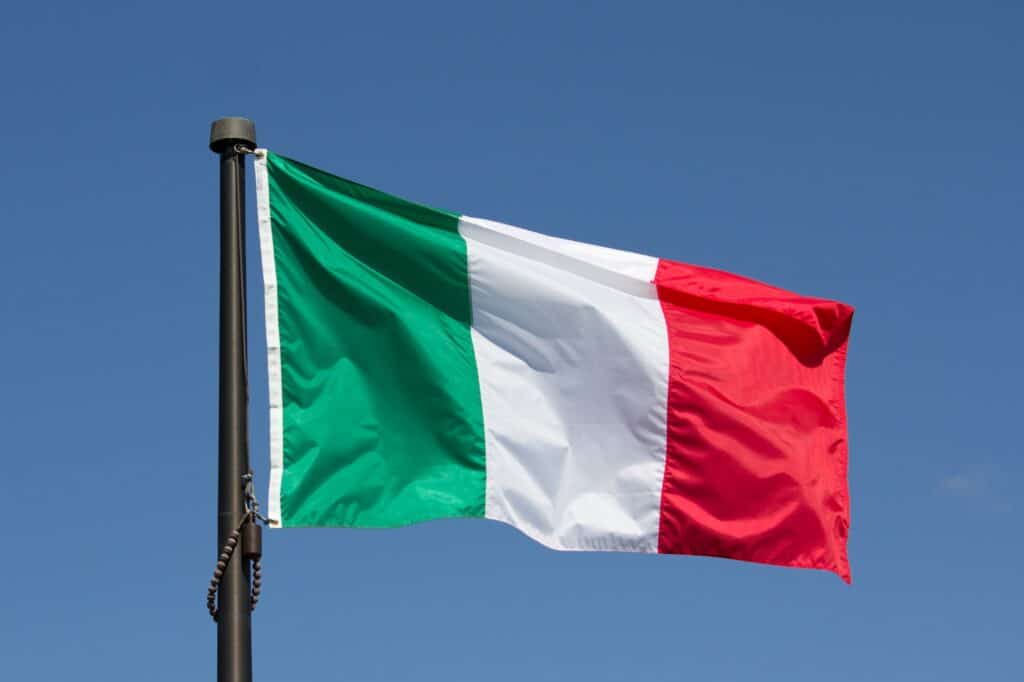
To describe the Italian flag, it is not enough to say that it is green, white and red. It, in fact, has very precise connotations established by specific laws. First of all, the arrangement of the colours is regulated: green must stand next to the flagpole, followed by white and red.
The shades are set by a 2006 government decree, which updated the previous regulations (according to which the colours were slightly different). The shades are not the same as in other flags. For example, in the French Tricolour, white and red are different (white ‘safe’ and red ‘red 032’).
The Italian regulations also specify the proportions of the flag: the three stripes must be the same size; and the ratio between the short side and the long side must be 2:3 (i.e., the short side equals two-thirds of the long side).
The regulations also provide specific provisions for displaying the Tricolour in public places. For example, since 1996, it has been compulsory in many cases to display the flag of the European Union along with the Italian flag.
Top Hidden Sightseeing in Italy
We can’t talk about Italy without paying our respect to its beautiful and wide variety of top places to visit. Italy never ceases to amaze. Anyone who travels there is enchanted by the beauty it offers.
Almost always, whoever visits Italy, whether a foreign tourist or a traveller from the same country, dwells on the best-known destinations: who does not know or does not dream of visiting Rome, Venice, Naples or the Amalfi Coast? Who has never heard of the Viareggio Carnival or the Palio di Siena? Who has never seen, at least in a photo, one of the more than 50 UNESCO World Heritage Sites, e.g., the Sassi of Matera or the Tower of Pisa?
However, Italy is much more than that. A thousand guidebooks would not be enough to tell the whole story. When you plan to visit Italy, you will realise that there is no shortage of incredible things to see and do.
Here are some of Italy’s most iconic attractions and exciting things to do. From fan favourites to classics, add them to your Italy bucket list and start planning.
Borghese Gallery

Built between 1609 and 1613, the opulent and grandiose Galleria Borghese, with its pink marble walls and frescoed ceilings and surrounded by fountains and flowering gardens, is an absolute must-see!
When architect Flaminio Ponzio designed it for the ‘villa Delle Feste’ of cardinal and art collector Scipione Borghese, he probably never expected it to become one of the best museums in Italy or such an attraction for tourists in Rome! Have a tour and admire sculptures by Bernini and Canova, paintings by Caravaggio, Raphael, Titian and more.
Aquarium of Genoa

This top-notch aquarium is the largest in Europe! Watch all your friends with fins and flippers in action, from sharks to dolphins, penguins, seals, jellyfish and more. There are no less than 70 rooms to explore here in one of Italy’s top attractions, home to 12,000 animals and sea creatures.
Kids will love the fact that one of Italy’s best museums was built inside an old ship in the harbour, making it one of the most visually stimulating places you’ll encounter as a family. Did we mention that you might learn a thing or two about mermaids here too?
Vatican Museums
The Vatican Museums themselves are works of art: just a walk through the richly decorated halls and galleries will leave you speechless! Be enchanted by the classical statues and admire the marble, such as the large candelabra in the Candelabra Gallery.
The tapestries are beautiful to die for but not to touch in the Tapestry Gallery, and you may develop the urge to travel over 40 16th-century topographical maps in the Map Gallery. Once you reach Michelangelo’s frescoes in the Sistine Chapel, your eyes will be so dazzled you might need a rest!
Castel Sant’Angelo

This imposing beauty on the banks of the Tiber is a captivating reminder of Rome’s legendary history. Enter this magnificent mausoleum, monument and museum and immerse yourself in the behind-the-scenes stories of Rome, which according to this, was definitely not built in a day.
Immerse yourself in the sumptuous Renaissance interiors (check out the ceiling murals!) and imagine what your favourite weapon might have been at the National Museum of Castel Sant’Angelo as you explore the military memorabilia. This great Rome attraction also promises rare views from the rooftops of the Eternal City!
Sigurtà Garden Park

Bring your own bike or hire one on-site, stroll casually on your own along the flowery paths or hop aboard the train that surrounds the gardens. Stop under the imposing 400-year-old Great Oak and walk a kilometre-long path full of roses.
Don’t forget to take some time to smell them. Then take the kids to pet the sheep, goats, chickens, turkeys, and ducks on the farm, or test your wits in the maze. There are many things to do at Sigurtà Garden Park, but the ultimate goal is to get back to nature. Embrace the buzzing of the bees and the singing of the birds in this little corner of paradise in Verona.
Cavour Park

If you haven’t yet met your inner cannonball, here is the perfect place to encourage an apparition. Parco Cavour is an attraction near Lake Garda that will make a huge splash with the whole family.
On a hot day, nothing is better than whizzing down the water slides, paddling in cool pools and tropical lagoons as a respite from the scorching sun and jumping on trampolines.
Kids will love crossing the rope bridges as the cannons blast them with water, just as you’ll love relaxing with a beer or three in the shade of a palm tree. Only 20 minutes from Lake Garda – add Parco Cavour to your wish list in Italy now!
Movieland Park
Lights, camera, action and welcome to a taste of Hollywood in Italy. The whole family will have their five minutes of fame in this world of movie-themed rides, live shows, roller coasters, stunt shows, interactive games and more.
Will you take on the Horror House and live to tell the tale? Will you test your mettle on the 50-metre-high drop from the Hollywood Action Tower or dare to ride the extreme inverted rollercoaster?
While you’re gearing up for an adrenaline rush, the kids can whizz across the water through a Grand Canyon-inspired film set on their little speedboats. If you don’t want to get wet accompanying them… tough biscuits!
Labyrinth of the Masone
Dare to get lost in the monstrous bamboo maze and smell every flower in the beautiful gardens of the Labirinto della Masone, an essential member of Grandi Giardini Italiani. Get close to the impressive art collection of Franco and Laura Ricci, with exquisite paintings and sculptures from the 16th to the 20th century. You also lose yourself in the neoclassical essence of the courtyard.
Leave hay fever at the door and explore the 16 bamboo plants surrounding the central building, inspired by Roman villas and the architects of the French Revolution. It’s nature, art and architecture here in one of Italy’s most unique and unmissable attractions.
Peggy Guggenheim Collection
The Peggy Guggenheim Museum in Venice houses some of the 20th century’s greatest artists, the Hannelore B. and Rudolph B. Collection, the Schulhof Collection and the Nasher Sculpture Garden. Inside this sprawling white house, where Peggy once lived, are some favourites from her personal collection.
You’ll see works by Picasso, de Chirico, Dalí, Pollock, Kandinsky and Magritte and others as you walk through the rooms admiring the entire artistic spectrum from Cubism to metaphysical painting, works of futurism, European abstractionism, avant-garde sculpture, surrealism and more!
Herculaneum Archaeological Park / Herculaneum
Gather the troops for an inside scoop on the dangers of living near a giant volcano at Herculaneum, the 2,000-year-old Roman city on the coast of the Bay of Naples. Discover how lava and ash ended up protecting buildings, mosaics, roofs, beds, wood and even sewers from the eruption of 79 AD.
You will also discover the grizzly fate of the 300 skeletons unearthed by Herculaneum archaeologists, all found in near-perfect condition. This is fascinating evidence of Roman times you will find in Italy.
Pitti Palace

Florence’s only royal palace and the largest museum complex in the City of Lilies allow you to immerse yourself in the everyday opulence of the aristocratic families who ruled during the Renaissance. To get the most out of your visit to the Pitti Palace, you can even wear a fur-trimmed velvet dressing gown!
Once inside the splendid royal flats, you will find furniture, glorious gilding and stucco work, paintings, and beautiful sculptures to amaze you. You’ll have to resist lounging like a lizard on the beautiful period furniture (get your own little four-poster bed!) But you can get up close to a myriad of works by famous artists, from Raphael to Titian, Rubens, and others.
Underground Naples
Go underground in Naples for a sight few get to see, like the ancient theatre of Neapolis, where Emperor Nero had a private dressing room!
In this eerie, partly cool underground attraction, you’ll see the ancient aqueduct, responsible for supplying water to Naples for 23 centuries, and lay your eyes on the bourbon-era drains covered in bright blue tiles, still glowing after all this time!
In a city over 2,400 years old, here is your chance to get into the real heart of how things used to work and truly appreciate your gelato above ground at the end of it.
Doge’s Palace
Immerse yourself in the royal opulence and political intrigue of Venetian history with a few hours at the impressive Doge’s Palace in Venice. Here at the Doge’s Palace, you will be in the city’s seat of power for hundreds of years.
You can almost hear the walls trying to whisper their secrets, and the rooms ooze opulence and gems from the art world of the Renaissance era glitter from room to room. Climb an enormous golden staircase and be transported by the sumptuous rooms adorned with masterpieces by artists such as Titian, Veronese, Tintoretto, and others.
Outside, cross the infamous Bridge of Sighs and discover more Gothic goodness around the often-flooded St Mark’s Square.
St Peter’s Basilica

Get ready to be stunned when you walk through the dedicated gate into the beautiful St Peter’s Basilica. This religious landmark and the trusted temple of Christianity is a work of art in itself, testifying to the creative talents of Donato Bramante, Carlo Maderno, Gian Lorenzo Bernini, and others.
For more facts, take a guided tour and discover the secrets of the ‘Chair of St Peter’, an ancient and legendary chair that may have been used by the first pope ever – and find out exactly how and why this monumental basilica was built. A piece of Venetian history and a must-see landmark.
Duomo of Milan

Undeniably the most popular attraction in Milan is the 14th-century Cathedral and Gothic monument known as the Duomo. The top of this spectacular Milanese attraction boasts a stunning view of the city, which was surely something the builders had in mind, if not in the first century of construction, in the sixth?
That’s right; the Duomo took six centuries to complete, so missing a visit to this finely crafted church would be a crime! Every element is a journey: its spires, stained glass windows and arches are a testament to the love that went into its creation.
Such is the Madonnina, a 14-foot-high golden statue of Mary marking the highest point of the building, which has been loved by the Milanese for centuries.
Enzo Ferrari Museum
Get your Ferrari repaired and discover what made Enzo Ferrari tick. The Enzo Ferrari Museum in Modena takes you on a joyous journey through some of history’s most important Ferrari cars. Every 30 minutes, 19 high-definition projectors transform the hangar into a panoramic cinema, with a special film dedicated to the father of the Ferrari empire.
Explore the rooms where he grew up and witness his father’s original workshop, where the magic began. This modern building is a true testament to Enzo Ferrari and celebrates the life of the iconic Italian who revolutionised the world of motor racing and sports car design.
Catacombs of San Gennaro / The Catacombs of San Gennaro

There is a lot to see at street level, but you will discover another hidden world of Italian history beneath the streets of Naples. It is best to join a tour, so a guide can explain the history behind the last home of Naples’ most revered saints and nobility.
As you travel through thousands of years of history, greet a sleeping San Gennaro, the patron saint of Naples. With its restored frescoes and high vaulted ceilings, this impressive tribute to the dead is not to be missed. Don’t worry if you feel a little scared; it will still be sunny at street level!
Natura Viva Park
A real safari in Italy! Yes, thank you. At Parco Natura Viva, watch lazy-eyed giraffes, striped zebras sunbathing, grazing antelopes and lions lying down from the comfort of your car. Or walk along the footpath and spot different types of exotic birds, chimpanzees, and other creatures in the various themed areas. Want to know more?
You can also stop by for one of the regular talks with the park staff. Parco Natura Viva is one of the top family attractions in Bussolengo, Veneto, in northern Italy. Children will never forget getting to know the animals in a such unique environment.
Le Caravelle Park
At the splash-tastic Le Caravelle Water Park, you choose your water adventure. Children young and old can whet their appetite for wetness on 15 epic water slides, including Foam and Kamikaze, or make a splash at Aquadance, the only water disco in Italy.
If getting slippery is tempting, try Multipista, Rapids of the Rio Bravo and Foam. You’ll find calmer pools for kids, wave pools for thrill-seekers, and activities like volleyball courts, rest areas, bars, restaurants, and more. It’s a realm of aquatic kicks for the whole family.
Rudiae Archaeological Park
Rudiae is one of the most important archaeological sites on the Salento peninsula in Italy. It is best known for being the birthplace of Quintus Ennius (239-169 BC), also known as the father of Latin literature.
The park was founded in the 1980s, and in 2011 the University of Salento, in collaboration with the Municipality of Lecce and the Soprintendenza Archeologia Belle Arti e Paesaggio, began excavations of this impressive amphitheatre. For those fascinated by ancient history, this archaeological site in Lecce is definitely a must-see.
Visit the Trevi Fountain, Rome

Built on the ‘end point’ of the Acqua Vergine, one of Rome’s most essential aqueducts supplying the Eternal City with delicious drinking water, the Trevi Fountain is as vital to the city’s flow as the stream of tourists that flock around it.
This Baroque beauty is one of Rome’s and Italy’s bucket list attractions, having undergone an intensive restoration and cleaning process courtesy of luxury fashion house Fendi.
Sit on the Spanish Steps, Rome
The Spanish Steps were built in 1723-1725 and remain one of Rome’s most visited attractions. Even if you park here and eat a sandwich, you will be part of the living history of the Eternal City as it moves around you (no doubt taking pictures).
Consisting of 138 steps arranged in a pleasant series of curves, vistas, straight ramps and terraces, it forms a graceful vertical bridge between the lower Piazza di Spagna and the upper Piazza Trinita Dei Monti, with its splendid double-towered church dominating the horizon.
Relaxing on Lake Como, Lombardy

It’s easy to take a file tour of Lake Como from Milan in any season, but you may want to stay longer in this idyllic piece of paradise. Nestled in the Alps, Lake Como is a popular Italian tourist destination and a base for adventurers wishing to explore the mountains of northern Italy.
Did you know that it is actually a sheet of glacial water that stretches some 56 square miles, and many locals believe there is an aquatic beast called ‘Larrie’ lurking in its depths? Move over, Nessie; your Italian cousin is here to stay.
Party at the Navigli District, Milan
One of the best neighbourhoods for a night out in Milan is the Navigli district. Put on your best suit and head to where the locals go for a good time, starting with a sunset stroll along the Naviglio Grande. This is where you can admire Milan’s impressive reflections in the water before the clock strikes the aperitivo.
Listed as one of Italy’s top 10 cocktail bars, Rita & Cocktails is a great place to start in this boozy hood. For classic jazz and soul, Nidaba is a theatre with great live music performances that attract locals and tourists alike.
Scala il Vesuvio, Naples
While Naples is a hive of historic buildings, you can’t beat a hike up its legendary ‘living’ volcano, Mt. Vesuvius. Classified as a Stratovulcano, Vesuvius exploded at its summit in 79 AD, causing destruction of epic proportions.
Mounting it is like mounting a flaming dragon, but if you are brave enough to put it on your bucket list in Italy, you can climb to the top in about 30 minutes. Watch the crater and try not to think about how its molten fury once buried Pompeii and Herculaneum under a pile of smoking ash (gulp).
Explore the Island of Capri

A breezy boat ride from the port of Naples will get you to cool Capri in under two hours. Regular ferries stop between the island and the mainland and nearby Sorrento. Don your sun hats and flip-flops, and get ready to snack on cannoli and gelato overlooking the craggy coastline and picturesque Italian piazzas.
Take a sunny stroll through the picturesque Marina Grande and wonder who owns all the glittering boats in the harbour. Don’t forget to sneak a peek at the famous Grotta Azzurra and catch a glimpse from the top of Monte Solaro.
Take a Gondola Ride, Venice

No trip to Venice is complete without hiring a guy in a striped shirt and red bandana to guide you along the canals in a gondola. If you’re lucky (or if you spend a little extra to really enjoy this addition to your Italian bucket list in style), he might even sing for you.
Gondolas are the classic symbol of romance in Venice and the sexiest way to navigate those lagoons. The best time to hire a gondola in Venice is just before sunset, so you can be the envy of all those tourists admiring the view alone – how boring! Make a toast to your romance as you smugly pass them by.
Recite a bit of Shakespeare, Verona
In beautiful Verona, where we set our scene, Romeo and Juliet are still the talks of the town. You can’t move an inch without coming across a stand selling Shakespeare-themed merchandise, but it helps that Verona is an eye-pleasing place in general.
While you’re there, you can’t miss the 13th-century house where Juliet is said to have lived. The former inn is now known as Juliet’s House and remains one of Verona’s main attractions. You’ll hear it before you see it; people love to shout, “Wherefore Art Thou Romeo” when they stand under the balcony.
Count the Colours of the Cinque Terre

The five beautiful villages that make up the Cinque Terre in northern Italy should be on anyone’s bucket list. These lively towns are a relatively easy journey from large surrounding cities like Milan, Turin and Florence but seem a world away.
Dine on the region’s fish specialities dressed in the famous Ligurian pesto. Explore picturesque fishing towns, sip wine while gazing at the azure waters and relax as some of Italy’s most sensational landscapes unfold around you.
Eat Real Bolognese, Bologna
Foodies should take a diversion to add Bologna, Italy’s food capital, to their bucket list. But don’t expect the spaghetti bolognese you’re used to. Around here, your favourite pasta dish arrives with a pile of flat ribbon noodles.
The tomato sauce is dried in a way that will ruin all your past experiences with spaghetti. If you get out of the restaurants, the historic basilicas and squares of medieval Bologna are easy to visit.
From Piazza Maggiore, climb the Torre degli Asinelli for panoramic views of the city, shop till you drop in the Quadrilatero or pick up some free samples of Mortadella from the market. This is one of Bologna’s prised cured meats.


